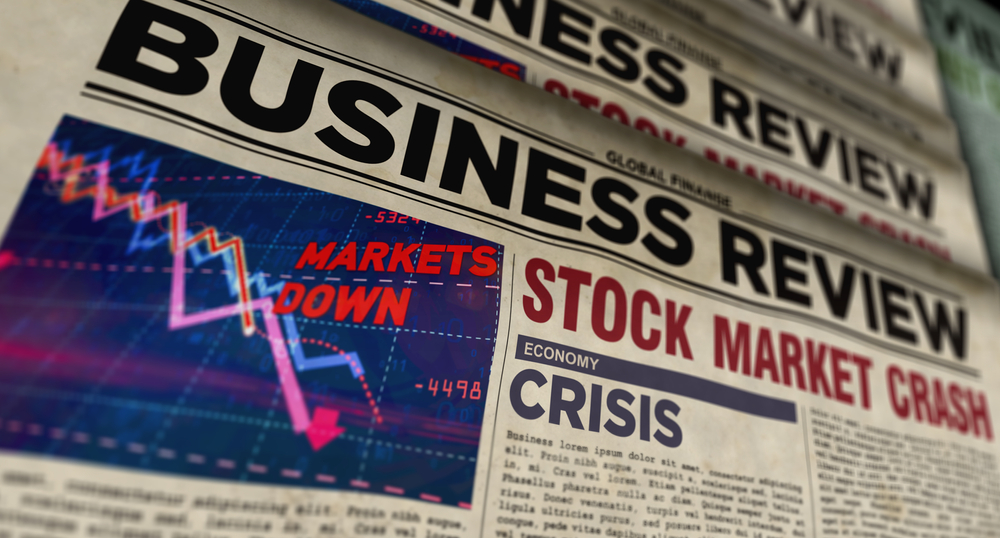On Tuesday, Oxford Club CEO Todd Skousen, my colleague and fellow investment analyst Marc Lichtenfeld, and I met with Members in our new online Clubroom, where we talked about the outlook for the economy and the markets.
Getting right down to business, Todd asked Marc and me about the odds of a stock market crash.
Despite this week’s rally, it’s not an idle question.
There are several parallels between what’s happened lately and what happened just before the last crash.
I know. I was an equity manager on Black Monday – October 19, 1987.
It was one of those “Where were you?” moments that I’ll never forget.
Let me set the stage…
After a long, lackluster period for stocks beginning in 1966, a powerful bull market began in 1982.
The Dow peaked in August 1987 – and then began to meander lower.
The week before the crash, the sell-off intensified with the market declining more than 9%.
The crash on Black Monday started in Hong Kong and quickly spread to Europe.
When the U.S. market opened, it gapped lower. And then just kept falling.
I remember everyone at the firm gazing at the red numbers on our terminals – and shaking our heads.
The mood at first was one of surprise. Then of shock. Then distress set in.
By the time the market closed – down a shocking 23% in a single session – I heard hysterical laughter from some brokers and bankers simply unable to process what had happened.
No government had failed. No currency had collapsed. No hedge fund had blown up.
There was essentially a news vacuum, aside from the crash itself, which terrified investors.
After all, the last time the stock market had crashed, it ushered in the Great Depression.
What was responsible for Black Monday?
Two things: investor panic and program selling.
The first is understandable. The latter? Not so much.
Only academics and economists are foolish enough to believe that you can count on people to be rational, self-interested actors.
They are not. Not all the time, anyway.
When a stampede begins, most will join the herd, even if it means acting against their best interests.
And that’s what happened on Black Monday.
Panicky investors and program traders knocked stocks down.
That set off more panic and new program trades that drove share prices lower still.
End result? A full-blown crash.
Now let’s return to today’s financial worries…
Inflation is high. Interest rates are rising. China – the world’s second-largest economy – is floundering. With mortgage rates near 8%, the housing market has come to a screeching halt. We have a hot war in Ukraine and the Middle East. There is widespread political dysfunction here at home. And the S&P 500 just entered a correction… as it did just before the market crashed in 1987.
Is a crash on the horizon?
No one can say it’s not a possibility. But I rate it a low probability for several reasons.
First off, we are not at the tail of a yearslong bull market, as we were 36 years ago.
This one only kicked off in October of last year.
Just a handful of big-name tech stocks have made really big moves higher.
And we don’t see the kind of nosebleed valuations and investor euphoria that characterize market tops.
Indeed, polls show that most Americans are skeptical about the strength of the economy and fearful about the outlook for stocks.
If anything, they are too pessimistic.
The economy is solid, growing at nearly 5% in the third quarter. Unemployment is near record lows. (There are 1.5 jobs available for every American looking for work.) And consumer spending remains strong, thanks to rising wages, trillions in leftover pandemic savings and vastly improved household balance sheets, due to higher home and equity prices than a year ago.
Another reason a crash is less likely today is that the Securities and Exchange Commission now institutes cross-market trading halts in the event of a severe sell-off.
These circuit breakers kick in at three thresholds: Level 1 (7%), Level 2 (13%) and Level 3 (20%).
If the market hits Level 1 or Level 2 before 3:25 p.m. ET, trading will halt for 15 minutes.
(Trading will not be halted after 3:25 p.m.)
The 15-minute pause is meant to give traders time to assess the situation and act rationally, not emotionally.
If the market hits Level 3 – a decline of 20% – trading will halt for the remainder of the day.
The circuit breakers were triggered for the first time on October 27, 1997.
That was due to a currency crisis in Asia, later dubbed the “Asian Contagion.”
Then, during the brief bear market that followed the onset of the COVID-19 pandemic in the spring of 2020, they were triggered four times in 10 days.
That did the trick. We had a rapid bear market – the shortest in history – but no crash.
Still, a market crash is a possibility and something every investor should prepare for.
How? In my next column, I’ll explain exactly what you should do.
You’ll be surprised to find how much you can protect… and how much you can profit.
